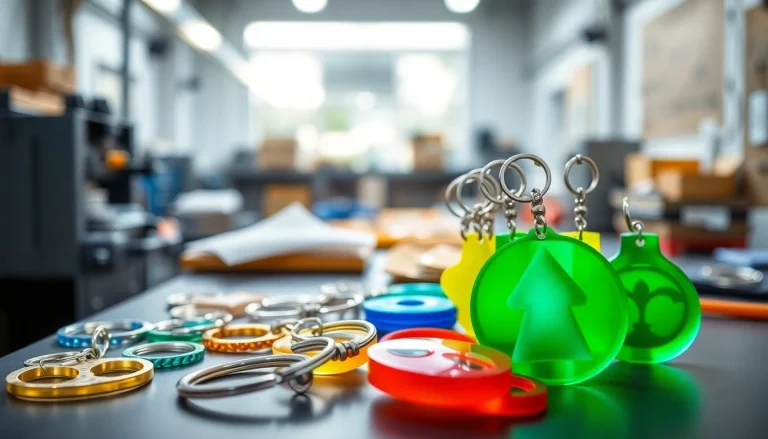
Understanding Professional Hair Tools
In the ever-evolving world of hairstyling, the right tools can significantly elevate the quality and effectiveness of hair styling practices. Whether you are a professional stylist or a beauty enthusiast, understanding the intricacies of professional hair tools is essential for achieving salon-quality results. This guide will explore the various dimensions of hair tools, from what defines them to how to maintain them effectively.
What Defines Professional Hair Tools?
Professional hair tools are specifically designed for professionals in the beauty industry. They differ from commercial or consumer-grade products in various ways, including quality, durability, and performance. Typically, these tools are made with superior materials and advanced technology, enabling hairdressers to style hair with efficiency and precision. Characteristics such as consistent temperature control in styling tools like hair dryers and straighteners or the ergonomic design of scissors add to their professional standing.
The Importance of Quality in Hair Tools
The quality of hair tools directly impacts the overall outcome of hairstyling. High-quality tools not only perform better but also help prevent damage to hair. For instance, professional-grade hair dryers utilize advanced ionic technology to reduce frizz and enhance shine, while inferior versions may cause excessive heat damage due to uneven temperature distribution. Investing in quality hair tools means investing in your hair’s health—both for yours and your clients’.
Common Types of Professional Hair Tools
Professional hairstyling encompasses a broad range of tools tailored for different tasks. Understanding these basics can help identify what professionals should keep within their toolkit:
- Hair Dryers: Essential for drying and styling, they come equipped with multiple heat settings and nozzle attachments.
- Flat Irons: Used for straightening hair, they offer various plate materials such as ceramic or titanium for optimal results.
- Curling Irons: Available in varying barrel sizes, these tools help create curls and waves suitable for different styles.
- Hair Clippers and Trimmers: Essential for haircuts, they come with a variety of guide attachments for customizable lengths.
- Styling Brushes and Combs: Tools designed for styling, detangling, and defining curls or straightened hair.
Essential Features of Professional Hair Tools
Ergonomic Design for Comfort
For professionals who spend hours styling hair, comfort is crucial. Ergonomically designed tools reduce hand fatigue and minimize the risk of repetitive strain injuries. Features such as non-slip handles, lightweight materials, and balanced weight distribution make a significant difference in how tools are used throughout a busy workday.
Heat Settings and Technology Explained
Heat control is a defining feature of any professional hair tool. Tools that allow for adjustable temperature settings enable stylists to customize the heat according to hair types—fine hair requires lower temperatures, while thicker hair can withstand higher heat. Moreover, innovative tools incorporate technologies like infrared heating or steam infusion, which can enhance performance while protecting hair health.
Materials Used in Quality Hair Tools
The longevity and efficiency of hair tools are influenced by the materials used in their construction. For example, ceramic provides even heat distribution, reducing hot spots that can damage hair. Titanium, on the other hand, heats up quickly and is highly durable, making it suitable for high-performance tools. Additionally, stainless steel is often used in scissors for its sharpness and corrosion resistance.
Top Brands for Professional Hair Tools
Leading Brands in the Market
Several brands have become synonymous with quality in the professional hairstyling arena:
- Dyson: Renowned for their innovative design, particularly with their Supersonic hair dryer.
- Paul Mitchell: Offers a range of heat styling tools focused on performance and care.
- GHD (Good Hair Day): Known for their straighteners, GHD uses advanced technology to deliver results.
- BaByliss: Offers an extensive selection of both professional-grade and affordable styling tools.
- T3: Known for their stylish designs coupled with advanced features in hair dryers and styling tools.
What Makes These Brands Stand Out?
These brands distinguish themselves through innovation, quality assurance, and customer loyalty. They often collaborate with professional stylists to develop tools that meet the industry’s demands. Moreover, extensive research and development ensure that these products incorporate the latest advancements in technology, such as digital heat control and moisture retention.
Price Ranges for Different Brands
Pricing for professional hair tools varies significantly based on the brand and technology used. Expect to pay between $30 for entry-level tools to upwards of $300 for top-of-the-line products. While it may seem tempting to opt for cheaper alternatives, investing in quality can yield long-term savings by reducing the frequency of replacements and potential hair damage.
How to Choose the Right Professional Hair Tools
Assessing Your Specific Needs
Choosing the right tools necessitates an understanding of your specific needs as a stylist. Are you focusing on precision cutting, volumizing, or versatile styling? Identifying your primary tasks will significantly narrow the selection process.
Real-Life Considerations for Hair Types
The type of hair you are working with will also inform your choices. For instance, thick, curly hair may require a high-velocity hair dryer and a straightening iron with adjustable temperature settings. Conversely, delicate or fine hair benefits from tools designed with lower heat and softer bristle brushes to prevent breakage.
Comparative Reviews of Popular Tools
It’s useful to read reviews and compare popular tools based on user feedback and stylist experiences. Platforms such as Beauty Review, Professional Hair Stylist forums, and social media can provide insights into product effectiveness, usability, and performance under real-world conditions.
Maintaining Your Professional Hair Tools
Cleaning and Care Guidelines
Proper maintenance and cleaning of hair tools are essential not only for hygiene but also for performance. Regularly remove hair product buildup and ensure tools are cleaned after each use to prolong their lifespan. For electrical tools, check for any wear and tear, and replace parts as necessary.
Storage Tips for Longevity
Storing hair tools properly is crucial to maintaining their functionality. Use heat-resistant mats for tools that need to cool down, and avoid tangled cords by wrapping them neatly. Consider investing in a dedicated toolbox or organizer to keep tools protected from damage and easily accessible.
When to Replace Your Hair Tools
Understanding when to retire your tools is crucial for both performance and safety. Signs that a tool needs replacing include inconsistent heating, damaged cords, worn-out plates, or rust on metal components. Regularly assess your tools to ensure they meet the demands of your work.






